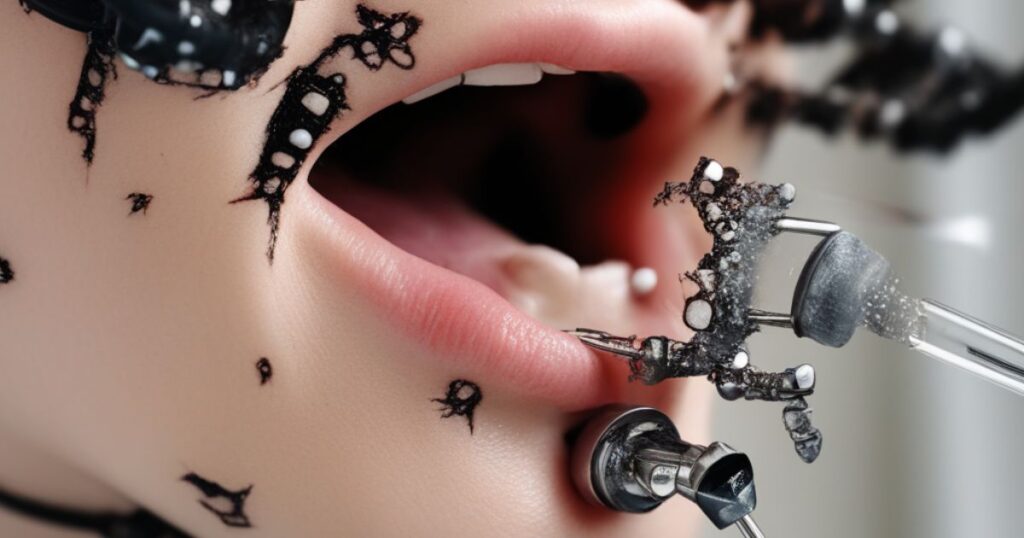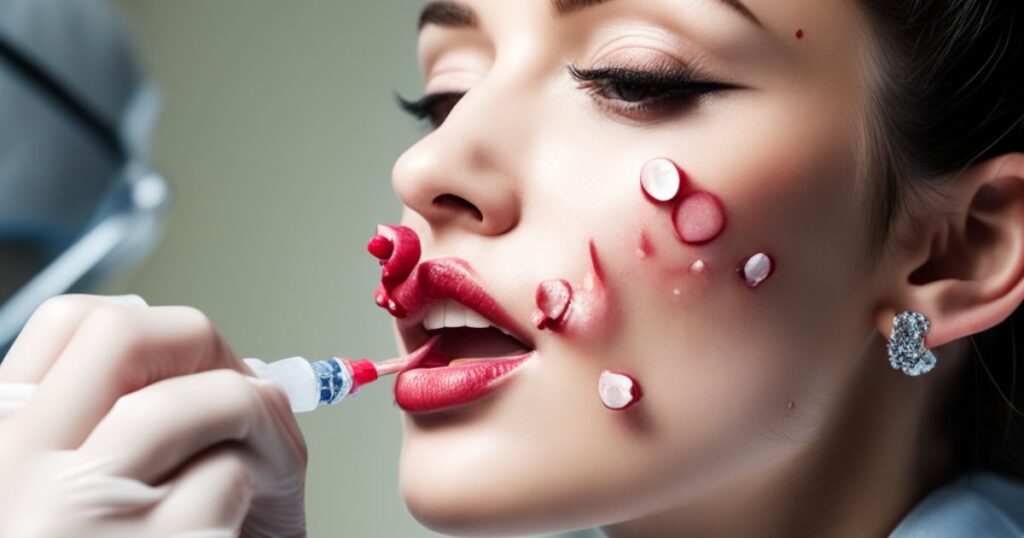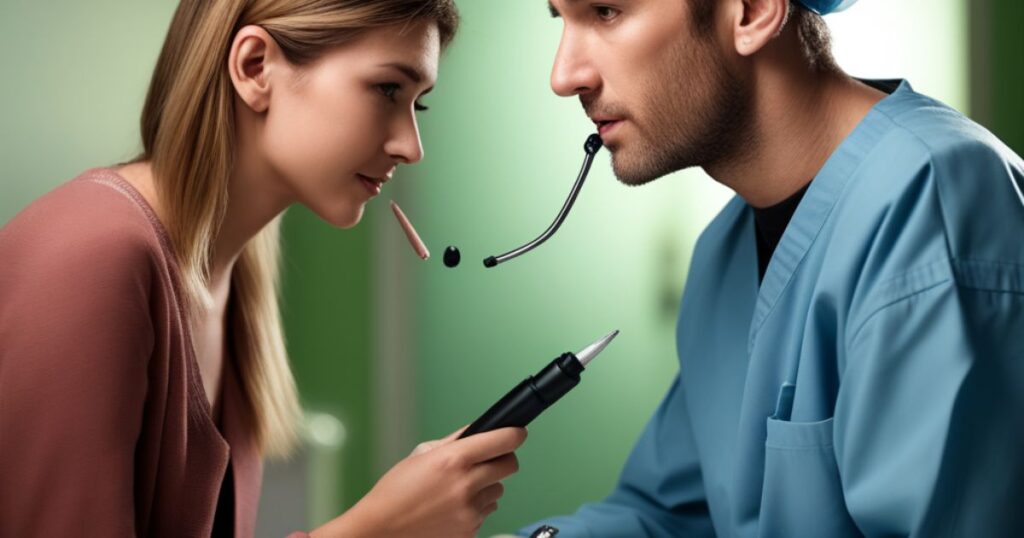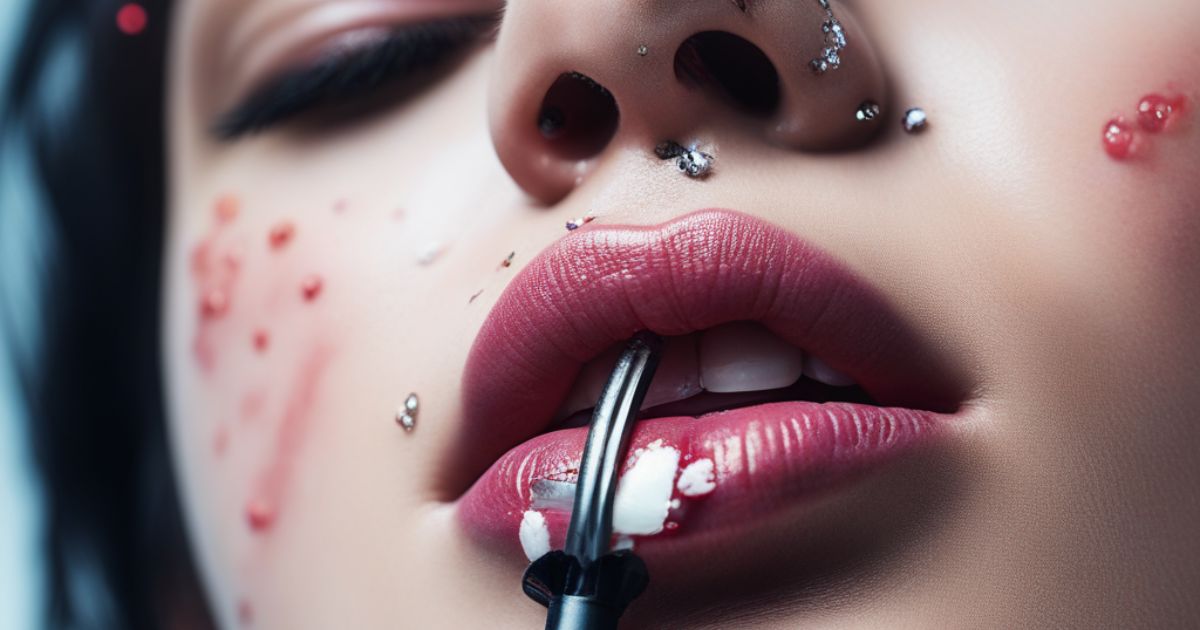Nose piercings are trendy but have risks like infection. An infected nose piercing can be painful and lead to complications if untreated. Learning proper aftercare and recognizing early signs of infection allows quick treatment.
A new nose piercing may seem infected when it’s just healing. But a true infection needs prompt care. Here’s how to treat an infected nose piercing and prevent future problems.
Infections happen when bacteria enter the piercing channel and multiply. Signs include pain, swelling, redness and pus. Treating involves cleaning, antibiotic ointment, and sometimes oral antibiotics.
Is my nose piercing infected or just healing?
During healing, some pain, redness and discharge are expected as the wound mends. An actual infection causes more intense symptoms that don’t improve over time. Signs of infection include increasing pain, swelling, redness and fluid discharge, especially yellow or green pus. The area may feel hot. You may also have a fever.
If you’re unsure if it’s infected, contact your piercer or doctor. Leaving an infection untreated can lead to scarring, the piercing closing up or spreading infection. Play it safe and have it evaluated.
Is it a piercing infection or an allergy?

Besides an infection, allergic reactions are another common cause of nose piercing problems. Signs it may be a metal allergy rather than an infection include:
- Itchy nose piercing site
- Small red bumps or rash around the piercing
- Dry, flaky or peeling skin near the piercing
- Piercing site that comes and goes
An allergy usually develops gradually over time, versus an infection which tends to come on more suddenly. Allergy symptoms also tend to flare up after contact with potential irritants. With an infection the symptoms persist. If you suspect a metal allergy, switch to an implant-grade titanium nose stud as this is least likely to cause reactions. See a doctor if symptoms don’t improve.
Nose piercing infection treatment
At the first sign of infection, begin treating your nose piercing right away. Gently clean the area using a sterile saline spray or solution – don’t over-clean which can worsen swelling. Apply an antibiotic ointment such as Neosporin twice daily after cleaning.
Do not use alcohol or hydrogen peroxide, as these can harm healing tissue. Over-the-counter pain relievers like ibuprofen can help reduce swelling and discomfort. Avoid touching or moving the jewelry.
See your doctor if symptoms like pain, redness, heat and pus don’t start improving within 1-2 days. Oral antibiotics may be prescribed for a more severe infection. Leaving the piercing in during treatment allows for drainage and speeds healing.
Preventing a nose piercing infection

Follow your piercer’s aftercare instructions closely to prevent infection in a new or existing nose piercing. Always wash your hands before touching the area. Clean it twice daily using sterile saline spray – don’t use alcohol or hydrogen peroxide. Saline soaks can also help rinse away crust buildup.
Gently pat dry with a clean paper towel after cleansing. Rotate the jewelry slightly during cleansing to prevent skin from sticking and buildup from forming. Avoid touching, bumping or moving the jewelry unnecessarily. Make sure jewelry is high-quality implant grade steel, titanium, niobium or solid gold.
Care for the piercing like a wound until fully healed, which takes about 6-9 months. See your piercer if the hole seems stretched or irritated. With attentive aftercare and not over-cleaning, you can avoid infection.
Who’s at risk for nose piercing infections?
Though anyone can develop an infected nose piercing, certain factors increase your risk. Getting pierced using unsterilized equipment or poor technique heightens infection chances. Touching the piercing with unwashed hands also introduces bacteria. Medical conditions like diabetes or a weakened immune system make infections more likely.
Smoking and alcohol overuse also impair healing. Swimming in unclean water can expose the piercing to pathogens. Using jewelry made from cheap, reactive metals boosts infection odds.
Finally, not caring properly for the piercing by cleaning it frequently, not touching it and rotating the jewelry can lead to infection. Take care to only visit reputable piercers and follow all aftercare instructions to lower your infection risk. If any signs of infection develop, begin treatment immediately by cleaning and applying antibiotic ointment.
When to call a healthcare provider about an infected nose piercing

In most mild cases you can treat an infected nose piercing at home. However, you should seek medical care if you experience:
- Severe swelling, redness or heat at the piercing site
- Pus that is yellow, green or foul-smelling
- Red streaks radiating from the infected area
- Uncontrolled bleeding or discharge from the piercing
- Flu-like symptoms such as fever, chills and fatigue
- Significantly enlarged lymph nodes around the piercing
Left untreated, more severe infections can lead to permanent scarring or other medical complications. Seek prompt medical attention if you suspect your nose piercing infection is advancing beyond mild symptoms you can manage at home. This may include antibiotic prescription or possible removal of the piercing if very swollen. With timely treatment you can still prevent permanent damage and keep your piercing intact.
FAQ’s
Can an infected nose piercing heal on its own?
Most nose piercing infections require medical treatment like oral antibiotics. Leaving it untreated allows the infection to worsen.
How do you know if nose piercing is infected?
Signs include increasing pain, swelling, redness, pus drainage, fever or the area feeling hot and tender.
What ointment is good for nose piercing infection?
Apply antibiotic ointments like Neosporin or Bacitracin twice daily to infected piercings after cleaning with saline spray.
Conclusion
Getting a nose piercing involves aftercare and some risk for complications like infections. Watch for key symptoms like uncontrolled swelling, drainage and worsening redness which may signal an infected nose piercing. Mild cases can be managed at home using sea salt soaks, antiseptic sprays and over-the-counter pain pills. More severe infections need evaluation and possible prescription antibiotics, especially if you develop fever or flu symptoms.
Carefully follow your piercer’s aftercare instructions, practice good hygiene and avoid submerging the piercing during healing to prevent issues. Seek prompt medical treatment for uncontrolled symptoms to avoid scarring or other problems. With proper aftercare and timely treatment for any infections, you can keep your nose piercing intact and look great.



















